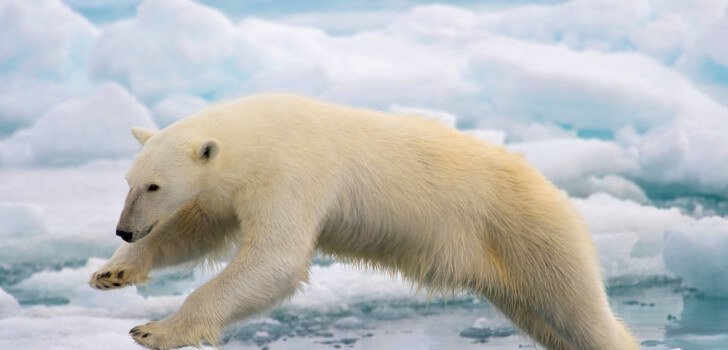As the Arctic’s ice slowly drifts away, polar bears are working harder just to get back to their own homes after hunting for food.
American scientists have tracked polar bears for nearly 30 years. New research shows that the bears have increased their overall activity levels over time.
Polar bears’ normal routine is to hang out near holes in the ice, waiting to catch and eat seals seals as they come up for air. Unfortunately, the thinning ice pack drifts faster than in the past, and therefore the bears must travel greater distances to return to their territory.
David Douglas, a wildlife biologist at the United States Geological Survey’s (USGS) Alaska Science Center explained that, “If the drift is faster, and that prevailing drift is to the west, than in order for an Alaskan polar bear to remain an Alaskan polar bear, it must walk further or faster to the east on the ‘treadmill,’ or it will end up in Russia.”
The USGS study compared the movements and activities of tagged female polar bears from the period from 1987 to 1998 with a group between 1999 and 2013.
Douglas told reporters that, “We find that the bears in the recent period are 9-13% more active to compensate for the ice motion.”
The USGS partnered with scientists at the University of Wyoming to try to determine the number of calories the bears need to ingest in order to fuel the additional travel.
The specialists calculated that the additional required calories is an increase of 2 to 7% from the older timeframe. That uptick in necessary calories equates to one to four extra seals per year.
Douglas noted that, “Now, you might think that’s not a tremendous amount, but you have to keep in mind that that’s happening at the same time as their habitat to hunt seals is shrinking. So, it’s kind of a double whammy.”
Douglas further added that, “Where this may be particularly significant is in the recruitment of young into the population because the number of extra seals needed to compensate for the ice drift is higher for a mother that’s trying to nurture one-year-olds or two-year-olds; perhaps she’s got twins. Single adults may be able to survive this kind of stuff but it is the young that may be most vulnerable to this increased stress.”
